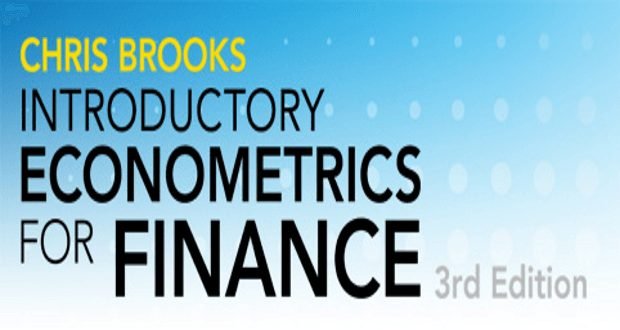180 câu trắc nghiệm Kinh tế lượng – Phần 5

Chapter 15: Estimation of Dynamic Causal Effects
KTL_001_C15_1: Ascertaining whether or not a regressor is strictly exogenous or exogenous ultimately requires all of the following with the exception of
○ economic theory.
○ institutional knowledge.
○ expert judgment.
● use of HAC standard errors.
KTL_001_C15_2: The impact effect is the
● zero period dynamic multiplier.
○ h period dynamic multiplier, h>0.
○ cumulative dynamic multiplier.
○ long-run cumulative dynamic multiplier.
KTL_001_C15_3: Quasi differences in \({Y_t}\) are defined as
○ \({Y_t} – {Y_{t – 1}}\).
● \({Y_t} – {\phi _1}{Y_{t – 1}}\).
○ \(\Delta {Y_t} – {\phi _1}{Y_{t – 1}}\).
○ \({\phi _1}\left( {{Y_t} – {Y_{t – 1}}} \right)\).
KTL_001_C15_4: GLS involves
○ writing the model in differences and estimating it by OLS, using HAC standard errors.
○ truncating the sample at both ends of the period, then estimating by OLS using HAC standard errors.
○ checking the AIC rather than the BIC in choosing the maximum lag-length of the regressors.
● transforming the regression model so that the errors are homoskedastic and serially uncorrelated, and then estimating the transformed regression model by OLS.
KTL_001_C15_5: HAC standard errors should be used because
○ they are convenient simplifications of the heteroskedasticity-robust standard errors.
● conventional standard errors may result in misleading inference.
○ they are easier to calculate than the heteroskedasticity-robust standard errors and yet still allow you to perform inference correctly.
○ when there is a structural break, then conventional standard errors result in misleading inference.
KTL_001_C15_6: The interpretation of the coefficients in a distributed lag regression as causal dynamic effects hinges on
● the assumption that X is exogenous
○ not having more than four lags when using quarterly data
○ using GLS rather than OLS
○ the use of monthly rather than annual data
KTL_001_C15_7: Given the relationship between the two variables, the following is most likely to be exogenous:
○ the inflation rate and the short term interest rate: short-term interest rate is exogenous
○ U.S. rate of inflation and increases in oil prices: oil prices are exogenous
● Australian exports and U.S. aggregate income: U.S. aggregate income is exogenous
○ change in inflation, lagged changes of inflation, and lags of unemployment: lags of unemployment are exogenous
KTL_001_C15_8: When Xt is strictly exogenous, the following estimator(s) of dynamic causal effects are available:
○ estimating an ADL model and calculating the dynamic multipliers from the estimated ADL coefficients
○ using GLS to estimate the coefficients of the distributed lag model
○ (a) but not (b)
● (a) and (b)
KTL_001_C15_9: In time series data, it is useful to think of a randomized controlled experiment
● consisting of the same subject being given different treatments at different points in time
○ consisting of different subjects being given the same treatment at the same point in time
○ as being non-existent (“parallel universes” only exist in science fiction)
○ consisting of the at least two subjects being given different treatments at the same point in time
KTL_001_C15_10: Consider the distributed lag model \({Y_t} = {\beta _0} + {\beta _1}{X_t} + {\beta _2}{X_{t – 1}} + {\beta _3}{X_{t – 2}} + …. + {\beta _{r + 1}}{X_{t – r}} + {u_t}\). The dynamic causal effect is
○ \({\beta _0} + {\beta _1}\)
● \({\beta _1} + {\beta _2} + …. + {\beta _{r + 1}}\)
○ \({\beta _0} + {\beta _1} + {\beta _2} + …. + {\beta _{r + 1}}\)
○ \({\beta _1}\)